As Roberto Alcocer stood on the stage at the Michelin Guide Ceremony in Oakland this past July to accept his first Michelin star, he experienced a sense of fulfillment. That star was “a consolidation of all of the years behind me and a reward for all the effort and sacrifices,” he says. But he felt conflicted. His path to this stage had been a fraught one—full of hard work, courage, and tragedy.
There are no easy roads to a Michelin star. Extreme is the name of the game. That’s cheffing. That’s Michelin. As the internet might say, it’s a journey. Alcocer formally began with his first restaurant, Valle de
Guadalupe’s Malva Cocina de Baja California, in 2014, around the time the area grew into Mexico’s wine hub. Many of the fancy wineries, hotels, and crowds were still a few years off, and only a handful of kitchens were around: Laja, Finca Altozano, Deckman’s en El Mogor, Corazon de Tierra. Malva was, Alcocer points out, “the one restaurant that was open no matter what.”

Alcocer launched it after years of toiling in others’ prestigious kitchens, including Sergi Arola’s groundbreaking, two-Michelin-starred La Broche in Madrid and Enrique Olvera’s Pujol in Mexico City (currently 13 on the “The World’s 50 Best Restaurants” list). Alcocer continued to fly under the radar, rarely receiving the media accolades his contemporaries in Mexico collected at the time.
Malva was not even supposed to be a permanent restaurant. “In the beginning, it was just going to be a pop-up,” Alcocer says. It was eclipsed by the media-driven star power of Javier Plascencia and his Valle outpost Finca Altozano (and, now, Animalón), the infusion of Michelin-starred juice at Deckman’s en El Mogor, and the ambitious precision of Laja and Corazon de Tierra.
Yet, Alcocer—born in Mexico City and raised in Oaxaca—managed to make a permanent go of it. In many ways, Malva was something of a proof-of-concept. The overall dining experience is emblematic of a style of fine dining that has come to characterize the Valle: an open-air experience under the sky or a palapa, creative food, meticulous technique. In this case, a wood-fired menu with distinct Mexican flavors and modern plating.
Then came the car crash. In June 2016, nearly the entire restaurant staff at Malva died in an accident near the restaurant.
“I couldn’t see how we could go on,” Alcocer says. Almost everything and everyone who was Malva was gone in a moment. It was not just employees he lost; it was his friends who he also saw as his “partners,” his co-venturers, he explains.
Somehow, he did not give up. He pushed forward, he adds, partly because of his diners and former staff. One, a lawyer, told Alcocer, “If you need me to wash dishes, let me know.” Against all odds, Malva survived the crash.
About three years later, Matt Stuhl, a restaurant industry consultant, ate at Malva and floated the idea of Alcocer consulting on a major hotel restaurant project north of San Diego. One of the key points was finding the right chef. Alcocer said he could help—and identified himself as the ideal candidate. Stuhl accepted.
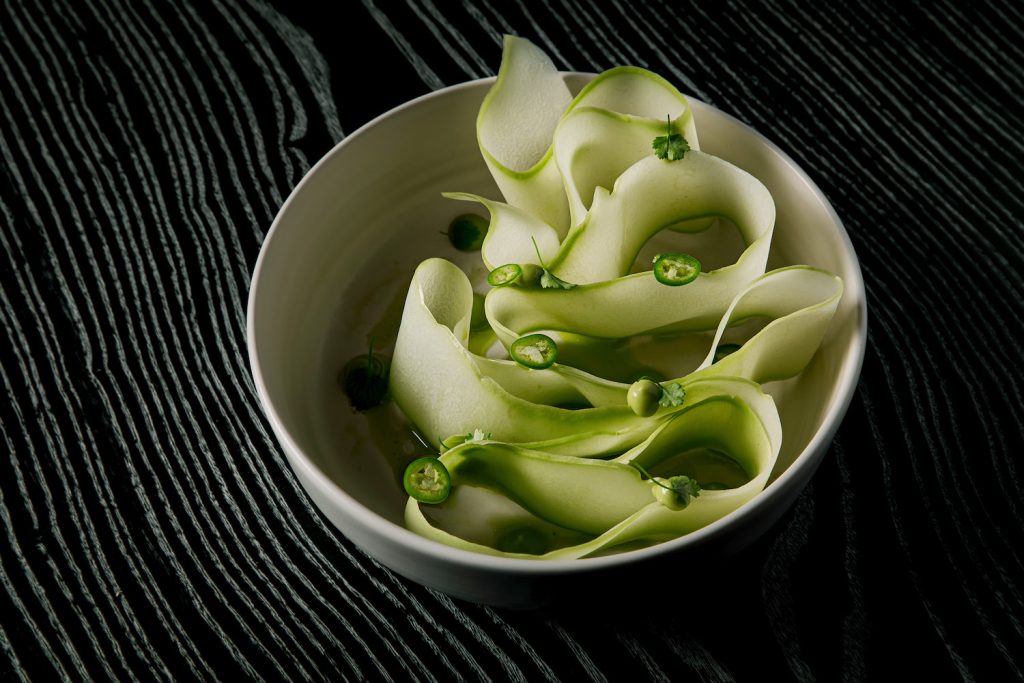
While ambition fueled his interest in the gig, there was another reason. Shortly after his first meeting with Stuhl, Alcocer’s son, an American citizen, was diagnosed as having autism. Perceiving the medical technology and educational programs north of the border to be superior to those south of it, Alcocer wanted a reason to move to the United States.
That perception, the family learned shortly after arriving in the US, was not totally accurate: Mexico’s medical system, Alcocer says, “is better if you are in the lower classes” than it is for the average person in the US. Same with education. But the other motivation—the fact that there are no Michelin stars in Mexico—remained salient. Ultimately, he says, “that’s why I took this job.”
The result is Valle Restaurant, which draws from Malva’s spirit but is every inch an example of fine dining north of the border. Clearly, it is Michelin-worthy cuisine. Perhaps more to the point, it is an avatar of where Alcocer wants to see the new Oceanside go: a bit more elegant, a bit more sophisticated. The county’s northern bookend to an ever-growing, ever more urbane San Diego.
While many chefs might shy away from the mind-bending challenges of running restaurants in two different countries, Alcocer embraces it, though he doesn’t even have a SENTRI card. Some days involve commutes both ways, around 300 miles round-trip, complete with two border crossings.
PARTNER CONTENT
It’s worth it. Being inducted into the Michelin star club is “a consolidation of my career,” he says. “I’ll never have to present my resume again.” Will Valle add another star? Alcocer demurs. Will Michelin come to Mexico and Malva? Alcocer doubts it will, but thinks those are the wrong questions to ask. His focus is on the same things that got him that first star: constantly working, improving his craft.
The rest, he seems to think, will take care of itself. As it tends to do.
